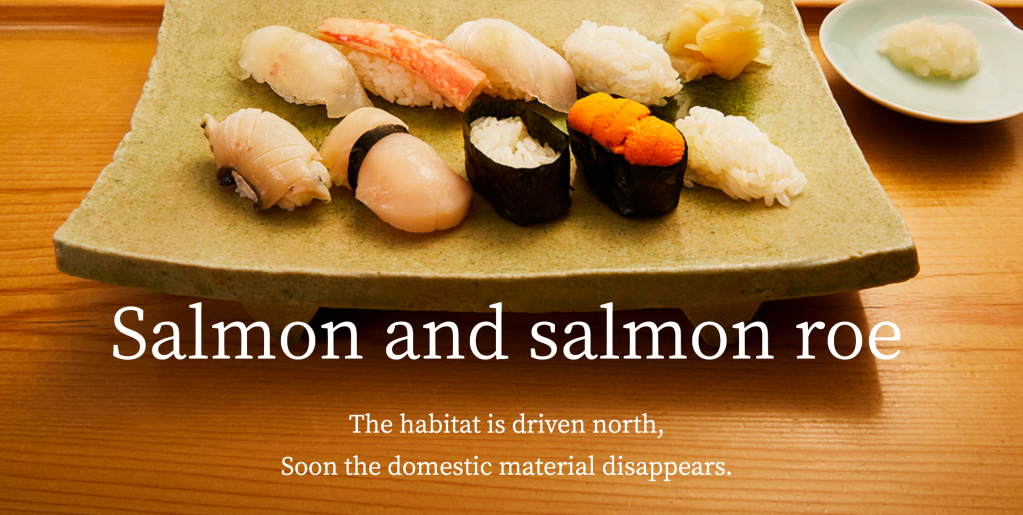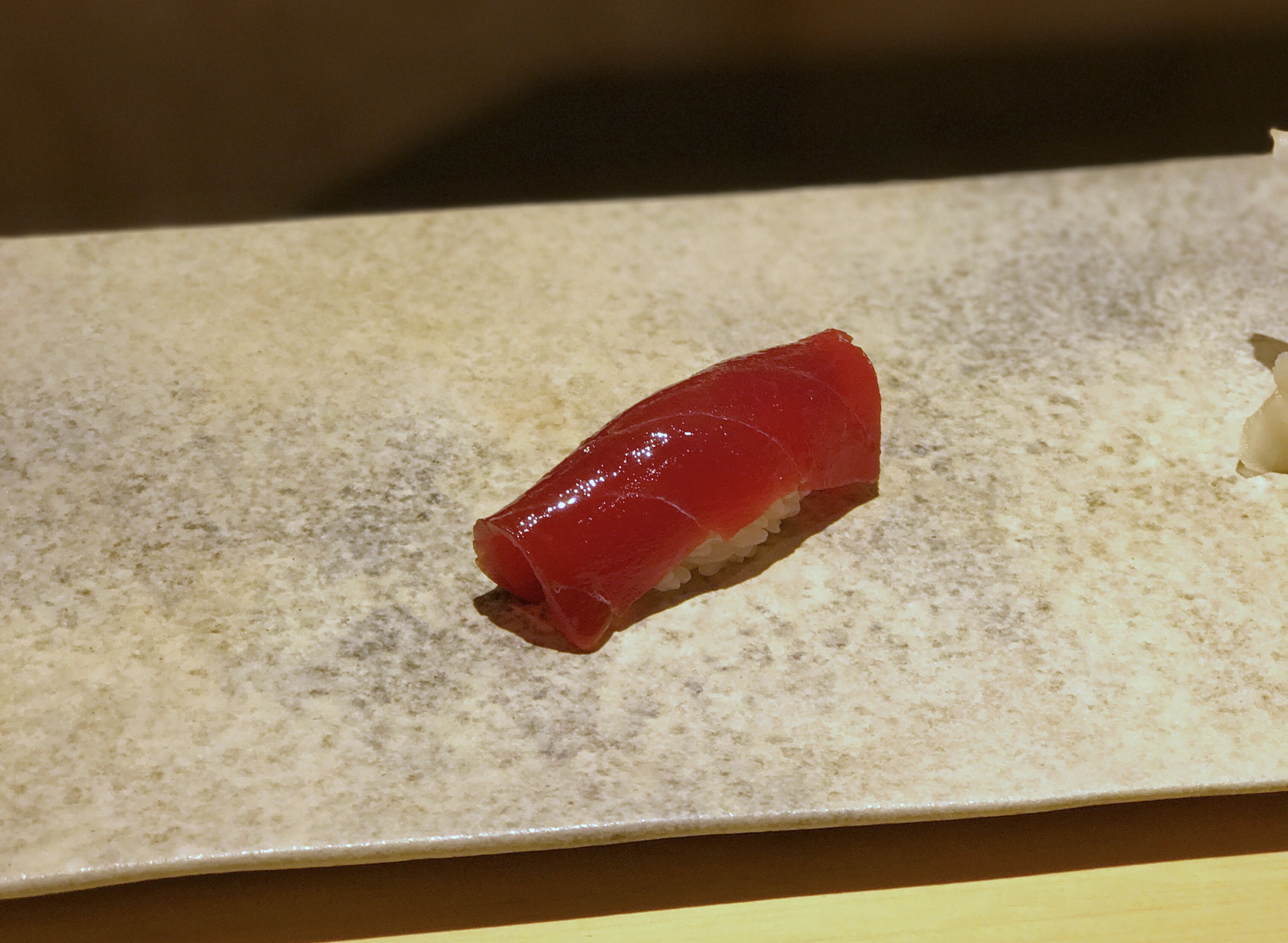
To raise awareness about climate change, Kyubey Ginza and a Japanese bio health firm Euglena teamed up for a campaign: The Last Day of Sushi (well, the direct translation is the day sushi disappears) and it kinda made me depressed.
Along with top researchers, they calculated the last days select neta can be served. Kyubey opened advanced reservations to book the last day you can eat x.
Here is a partial list of the neta and the last years they can be served that they published:
- Ika イカ (cuttlefish) last year it can be served = 2035 (16 years left).
Last booking date: Saturday, June 30th, 2035 - Shako しゃこ (mantis shrimp) = 2041(22 years left)
Last booking date: Saturday, November 30th, 2041 - Ikura and salmon いくら= 2049(30 years left)
Last booking date: Friday, December 17th, 2049 - Scallops ほたて = 2068(49 years left)
Last booking date: Friday, August 31st, 2068 - Uni うに (sea urchin) 2073(54 years left)
Last booking date: Thursday, August 31st, 2073 - Awabi あわび (abalone) 2080(61 years left)
Last booking date: Tuesday, October 1st, 2080 - Hirame ヒラメ (Flounder) 2089 (70 years left)
Last booking date: March 31st, 2089
Bleak shit.
There is an English version of the site (run through Google Translate so the descriptions may be weird lololol) which goes a little more into detail about their research, impact, etc., and they’re also doing a Twitter campaign. First prize is a 30,000 yen voucher for Kyubey.
visit the English site here: https://www.euglena.jp/sushi/

































